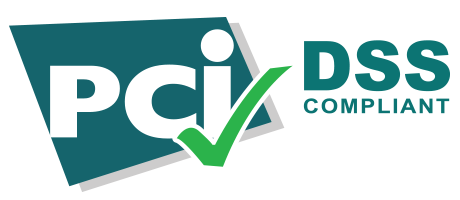Content
- The Theory Of Lower Of Cost Or Market Lcm
- What Is Meant By Market In The Lower Of Cost Or Market Rule Quizlet?
- Often Asked: What Is Lower Cost Method?
- What Is Lower Of Cost Or Market Lcm
- The Lower Of Cost Or Market Of Inventory: Definition & Method
- What Are The Purposes Of Lower Of Cost Or Market Rule?lcm Supports Four Accounting Principles
Income statement impacts occur when the loss expense account carries a non zero balance. This expense , like other Income statement expenses, is subtracted from net sales revenues to lower reported profits. He lower of cost or market rule serves several purposes consistent with international accounting standards. These appear almost universally in Generally Accepted Accounting Principles for most countries.
- Financial StatementsFinancial statements are written reports prepared by a company’s management to present the company’s financial affairs over a given period .
- This phenomenon can be seen whenever a new digital camera or cell phone is introduced to the market.
- XXThe loss from the decline in inventory value would be reflected in the income statement and reduce net income.
- The market generally refers to a merchandise item’s replacement cost in the quantity usually purchased.
- LCM adjusts the reported value of inventory based on the market and original cost prices.
- The lower of cost or market rule can help apply the matching principle in several ways.
All legitimate business benefits belong in your business case or cost/benefit study. Find here the proven principles and process for valuing the full range of business benefits. Ecurities that companies hold as assets include both debt instruments and equity instruments . The term “securities” also covers derivative instruments such as options, futures, and swaps.. The Balance sheetimpacts occur when the contra asset allowance account has a non-zero balance. The allowance account balance reduces the book value of inventory by the balance amount. The loss expense account for reducing inventory must now show a debit balance of $900.
The Theory Of Lower Of Cost Or Market Lcm
This situation typically arises when inventory has deteriorated, or has become obsolete, or market prices have declined. The rule is more likely to be applicable when a business has held inventory for a long time, since the passage of time can bring about the preceding conditions. The rule is set forth under the Generally Accepted Accounting Principles accounting framework.
- Like firms that adopt the LIFO method, firms using the FIFO approach can also value their goods at cost.
- For other inventory items, net realizable value may become less than cost because of changes in fads or technology or possibly as a result of damage.
- The latter is generally the most conservative of these approaches.
- Learn the ins and outs of inventory valuation, and you will add one more management tool to your skill set.
Under IFRS, inventories are measured at the lower of cost and net realisable value. Net realisable value is the estimated selling price in the ordinary course of business less the estimated costs necessary to make the sale. Under US GAAP, inventories are measured at the lower of cost, market value, or net realisable value depending upon the inventory method used. Market value is defined as current replacement cost subject to an upper limit of net realizable value and a lower limit of net realizable value less a normal profit margin. Reversals of previous write-downs are permissible under IFRS but not under US GAAP. An exception to this rule becomes relevant if the value of inventory falls below cost. Once again, the conservatism inherent in financial accounting is easily seen.
What Is Meant By Market In The Lower Of Cost Or Market Rule Quizlet?
The sales value of an item can fall for any number of reasons. For example, technological innovation will almost automatically reduce the amount that can be charged for earlier models. This phenomenon can be seen whenever a new digital camera or cell phone is introduced to the market.
- The main rationale for this option is that it would align tax accounting rules with the way businesses tend to sell their goods.
- Do not write down the cost of raw materials if the finished goods in which they are used are expected to sell either at or above their costs.
- Changes in the carrying amounts within inventory classifications (such as raw materials, work-in-process, and finished goods) may provide signals about a company’s future sales and profits.
- A variant of the inventory turnover ratio, it is computed by dividing the inventory turnover ratio by the number of days in the year .
- All legitimate business benefits belong in your business case or cost/benefit study.
- A firm will choose whichever method – item-by-item or total inventory – is easier for it to use.
The general rule is to abandon the historical cost principle when the future utility (revenue-producing ability) of the asset drops below its original cost. Inventory turnover ratio Liquidity ratio that measures the number of times on average a company sells its inventory during the period. Computed as the cost of goods sold divided by the average inventory on hand during the period. Analysts compute average inventory from beginning and ending inventory balances. Purchase commitments Agreements to buy inventory weeks, months, or years in advance. The seller generally retains title to the merchandise or materials covered in the purchase commitments. Upper limit In the lower-of-cost-or-market approach, the highest amount at which inventory can be reported, which is the inventory’s net realizable value.
Often Asked: What Is Lower Cost Method?
Under that assumption, the cost of those more recently produced goods should approximate current https://accountingcoaching.online/ market value . Now the market floor is the NRV minus the expected profit per item.
Free AccessProject Progress ProFinish time-critical projects on time with the power of statistical process control tracking. The Excel-based system makes project control charting easy, even for those with little or no background in statistics. Successful branding is why the Armani name signals style, exclusiveness, desirability. Branding is why the Harley Davidson name makes a statement about lifestyle. Strong branding ultimately pays off in customer loyalty, competitive edge, and bankable brand equity. Take control of asset TCO and prevent nasty cost surprises later. $5,000If instead the market value of these securities decreases, the adjusting transactions include a “credit transaction” to Marketable securities and a debit to Unrealized holding gain.
What Is Lower Of Cost Or Market Lcm
At the end of each reporting period , an accountant chooses between “Market” or “Cost” as the appropriate value to report for inventory. How do you value and report inventories under the Lower of Cost or Market Rule? Stock Revaluation examples explained.Determining inventory value under the LCM rule. Cost-to-retail ratio The total goods available for sale at cost divided by the total goods available for sale at retail price. If the replacement cost had been $45, we would write the inventory down to $45. The IRS is less concerned about the nuances of the specific inventory procedures you use, than with your being consistent from year to year so that your inventory method accurately reflects your income. If your business carries inventory, you will need to keep track of it.
- Click the links below to open governmnet resources in a new tab.
- For example, assume that the market value of the inventory is USD 39,600 and its cost is USD 40,000.
- A large company like Home Depot that has a consistent mark-up can reasonably estimate ending inventory.
- The selection of the correct method of valuation is always a complicated process.
The ceiling prevents overstatement of inventories and understatement of the loss in the current period. So under the old rule of LCM, replacement cost would be the ceiling. Let’s also say we would normally mark them up and expect to make about $20 on the sale, so the floor, the lowest we could adjust them to, would be $30. If we lowered the cost to $30 on our books and sold them for $70 minus the $20 it takes to make them saleable, we’d make a normal profit. The main rationale for this option is that it would align tax accounting rules with the way businesses tend to sell their goods. Under many circumstances, firms prefer to sell their oldest inventory first—to minimize the risk that the product has become obsolete or been damaged while in storage.
The Lower Of Cost Or Market Of Inventory: Definition & Method
Stock counting and physical verification of stock are time-consuming processes. The selection of the correct method of valuation is always a complicated process. We note that the inventory write-down of $7000 reduces the Asset Size. When the inventory value rises, the gains are ignored, and inventory is valued at cost.
A departure from historical cost principle can be justified for two main reasons. Thus if the total value of the inventory is $28 million, then investors will assume that inventory can be sold for $28 million or around the number. The second reason is that the matching principle requires that a loss of utility be charged against revenues in the period in which the loss occurs, not in the period in which the inventory is sold. Also, the lower of cost or market is a conservative approach to inventory valuation in such circumstances, and that is the topic of this chapter. Lower of cost or market valuation method assumes that if there is a doubt about an asset’s value, it is preferable to undervalue it, rather than overvalue it. Is an inventory costing method that values inventory at the lower of its historical cost or its current market cost.
The replacement cost of last-in, first-out inventories exceeds carrying value by approximately USD 169 million. The company must recognize the loss in the period the loss occurred. On the other hand, if ending inventory has a market value of USD 45,000 and a cost of USD 40,000, the company would not recognize this increase in value. A company may apply LCM to each inventory item , each inventory class , or total inventory. As with purchase value, if the sales value of an inventory item falls below its historical cost, the lower figure is reported along with a loss to mirror the impact of the asset reduction. Raw Material InventoryRaw materials inventory is the cost of products in the inventory of the company which has not been used for finished products and work in progress inventory. Raw material inventory is part of inventory cost which is reported under current assets on the balance sheet.
For inventory, net realizable value is the anticipated sales price less any cost required so that the sale will occur. For example, the net realizable value of an older model digital camera might be the expected amount a customer will pay after money is spent to advertise the product. The net realizable value for a scratched refrigerator is likely to be the anticipated price of the item less the cost of any repairs that must be made prior to the sale. Inventory also has a sales value that can, frequently, be independent of replacement cost.
In some cases, often because of bad timing, a company finds that it has paid an excessive amount for inventory. Usually as the result of an increase in supply or a decrease in demand, replacement cost drops after an item is acquired. To illustrate, assume that Builder Company—the manufacturer of bicycle Model XY-7—has trouble selling the expected quantity of this style to retail stores because the design is not viewed as attractive. Near the end of the year, Builder reduces the wholesale price offered for this model by $50 in hopes of stimulating sales.
Weighted Average Inventory Method: Example
When the owner first acquires marketable securities, the Balance sheet values of these securities are equal to acquisition cost. Acquisition cost for securities includes purchase price, of course, but also other purchase-related costs, such as brokerage commissions. Firms that report “minority active investment” equity securities holdings, usually initially value them at Cost. At the end of following reporting periods, however, owners apply the equity valuation method to adjust amounts if necessary.
XXThe loss from the decline in inventory value would be reflected in the income statement and reduce net income. Inventory would be reflected in the balance sheet and reduce the value of inventory. If there are unexpired sales incentives that will result in a loss on the sale of a specific item, this is a strong indicator that there may be a lower of cost or market problem with that item. Consequently, Company A and Company B can be separate legal entities, but for Financial Lower of Cost or Market Method Accounting purposes , they must report together through one consolidated financial statements. If either condition does not apply, regulators assume that the securities serve for long-term objectives and the firm must report them as long-term assets. Equity securities held for the long-term which do not meet both of the above criteria are called “Investment in Securities assets,” not “marketable securities.” The cost value, moreover, is $7,000 greater than Market value.














